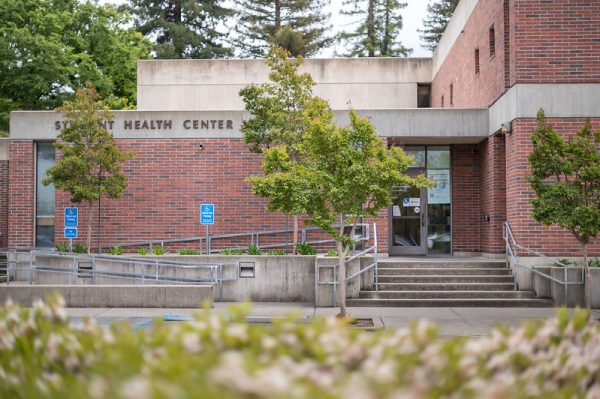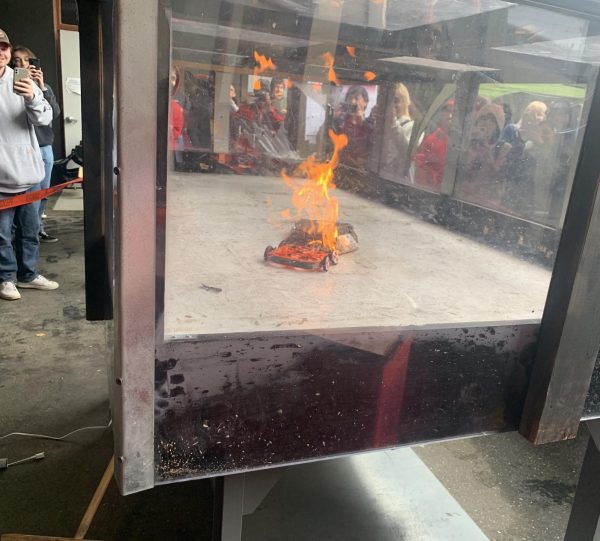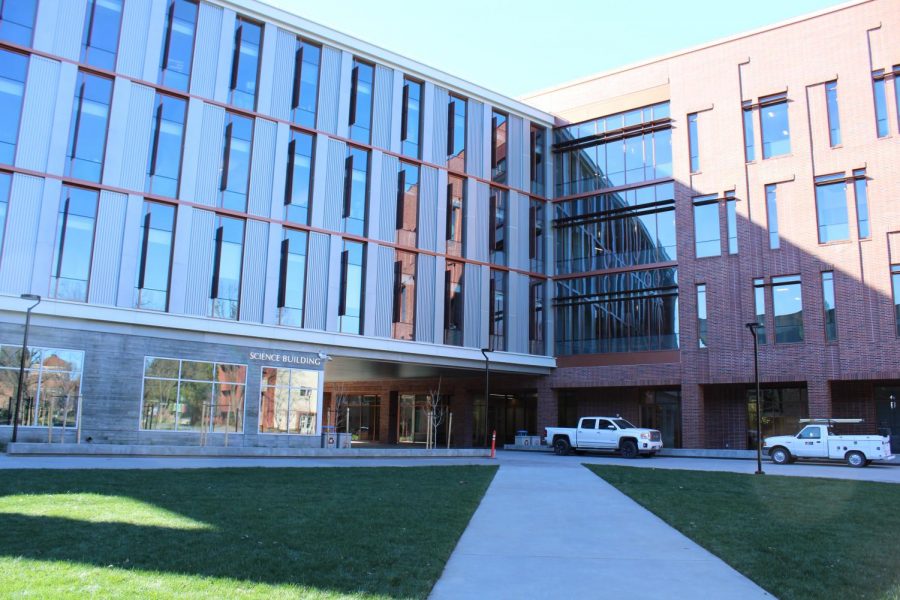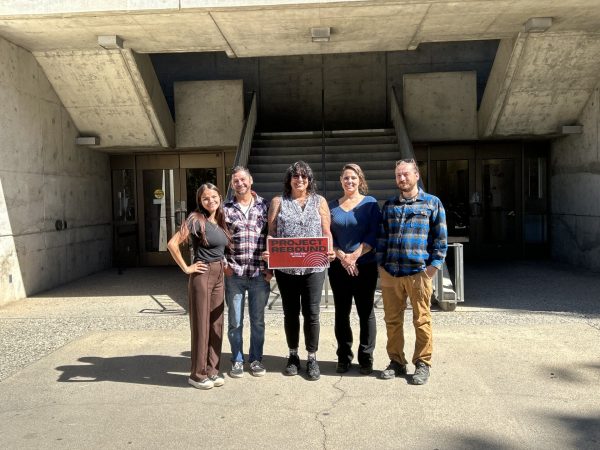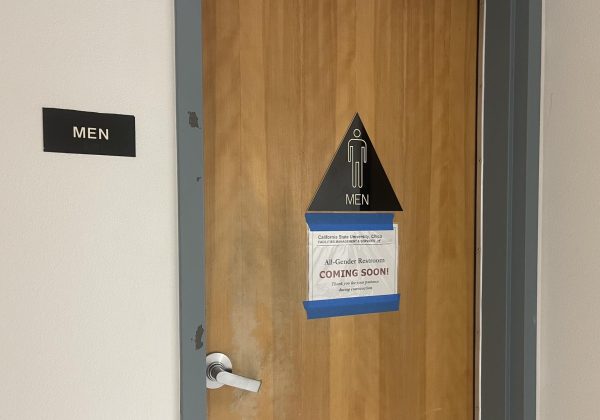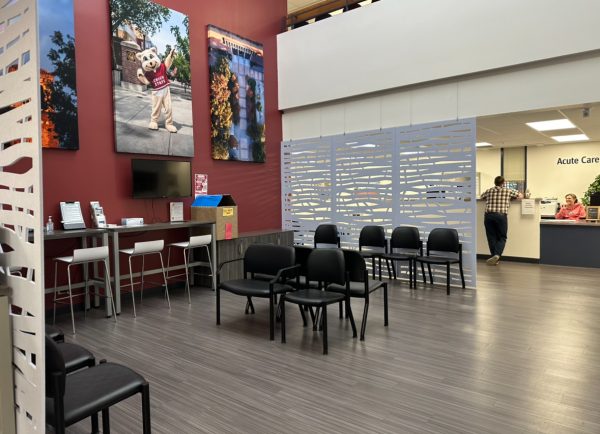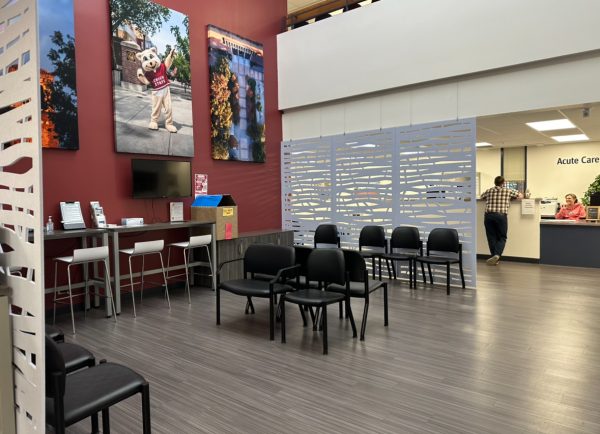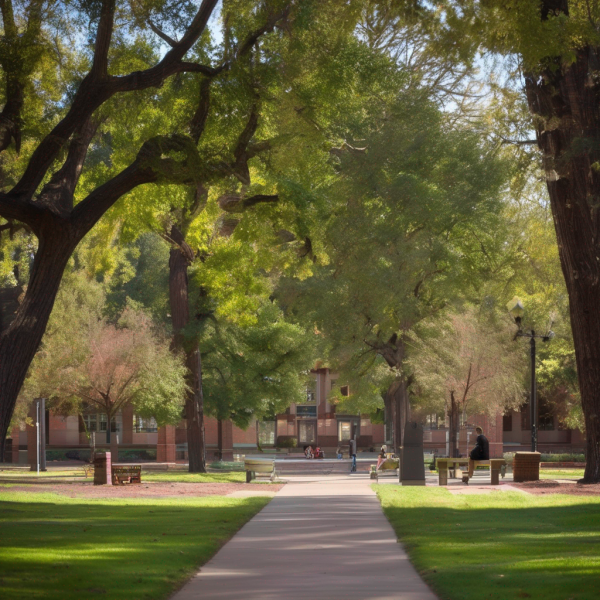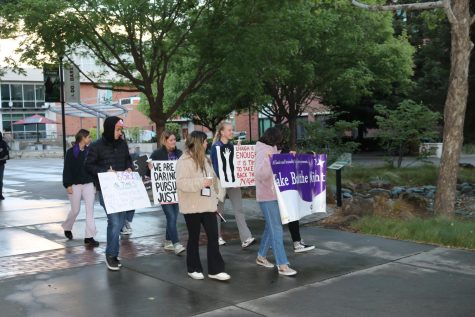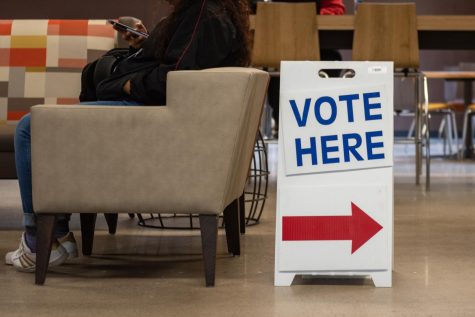How the pandemic changed teaching science
The new science building will hold in-person classes for the fall 2021 semester.
Chico State professor and department chair of chemistry and biochemistry, Dr. Chris Nichols, put it as bluntly as possible. He hates teaching over Zoom.
Nichols joined the Chico State faculty in 1999 and usually teaches advanced organic chemistry courses along with general education courses, but has chosen to teach one lab class this semester.
“I don’t like [teaching over zoom] it at all,” Nichols said. “I taught a lecture class last semester that was fully asynchronous. I made videos with my voice over them with me drawing on a whiteboard.”
Nichols explained that there was no connection between him and the students.
“I hardly interacted with the students at all,” Nichols said. “There was hardly any attendance in the office hours. The students would email me occasionally about questions they had about the homework. It’s not the way I want to operate.”
For most science teachers, making the transition to teaching over Zoom was anything but easy. Professors had to change the way they teach their courses and had to come up with ways to keep students engaged.
The pandemic could not have come at a worse time for Chico State. For almost three years, Chico State had been constructing a brand new, state-of-the-art science building. The new science building was supposed to be ready to go in Fall 2020, but because of the COVID-19 pandemic, faculty and students haven’t had the opportunity to put the building to use.
The Orion spoke to a few science teachers to talk about teaching science over Zoom, the new science building and other topics.
Teaching Science Over Zoom
“The lab is seriously impossible to effectively do over Zoom,” said Dr. Carolynn Arpin, an organic chemistry professor.
Arpin said, like most teachers going through the pandemic, school has been incredibly difficult.
“I’m working my butt off trying to give them a meaningful experience with videos and take home labs,” Arpin said. “It doesn’t replace the handling of the regents, the glassware and the big instruments. It’s hard because I am putting in so much work and so are the students, but I know the end result is not the same. It’s not comparable and It’s detrimental to the students. The lab is not feasible.”
Arpin records the lab, does the lab and sits down and edits the entire lecture, which is a long process. She adds questions onto the screen to keep the students engaged. The take home kits for the labs are also hard to set up and perform, Arpin said.
Even though the lab part of the chemistry class has taken a hit, Arpin has developed a weekly routine for the lecture that is going well.
She explained that on Monday’s, she holds an optional Q&A zoom meeting where she can answer any questions that students have. On Wednesday’s, the students have a group quiz where they sit in breakout rooms and complete the quiz as a group. On Friday’s they go over practice problems which Arpin has enjoyed.
“I definitely think I will use those videos again in the future and I will change the way I do lectures in-person,” she said.
One change that Arpin has enjoyed is making lectures in video form and having the students watch them before class. Before the pandemic started, Arpin spent all of her time lecturing and did not have time to go over practice problems.
Dr. Lisa Ott, an analytical chemistry professor, echoed what Arpin said about her experience teaching over Zoom. Ott is teaching five chemistry labs this semester and said it has been very challenging.
“Teaching the classes over Zoom is not so bad,” Ott said. “It’s teaching the lab that is the hard part. It’s really challenging not being able to be with them and do science the way we usually do.”
Ott said they had to revamp the way they did everything when they moved to doing classes over Zoom. Instead of Ott sitting in front of a white board and lecturing for a few hours, she has changed her teaching style.
“The students do a little bit of pre work and I do a few minutes of lecture and then they do a problem and then we come back and report out on it,” Ott said. “Then we can figure out where things might have gone wrong. Then I do a couple more minutes of lecture and then we are back to working. That has worked fairly well in the Zoom environment.”
The New Science Building
Arpin said she’s regularly in the new science building, up to four times a week working with research students on Tuesdays and Thursday afternoons.
Arpin is excited to have to have a bunch of new technology and equipment available for students and faculty to use.
“As an organic chemist we were doing a lot of our labs outside of the fume hood in the old building which is not the best practice and is not realistic for what students are going to see later in their careers and stuff like that,” Arpin said. “We now have fume hoods for all the organic chemistry labs so every experiment will be done in a fume hood.”
Something the chemistry department faculty wanted to focus on with the new building was incorporating more collaborative work for the students. Instead of being in a lab by yourself, the new building will allow students and professors to work together in bigger labs.
This will allow people to bounce ideas off each other and hopefully create an enjoyable work environment.
“That collaborative experience is unique,” Arpin said. “Everyone in the department gets along really well and I am excited to have a bigger space. It will give the students a way of how the industry is run past graduation. It’s way more collaborative and everyone is working in the same lab.”
Arpin hopes that this new building will be able to attract more students into the STEM program.
“I’ve talked to several students who say it was that first tour of the chemistry department and the instrumentation there that drew them,” Arpin said. “We have the tools on display and it just looks pretty with all the natural light coming in through the windows.”
Ott visits the new science building frequently to work with research students. Ott said she has part of her office set up and is in the process of setting up her teaching lab for the fall semester.
“I think the building planners, the faculty and staff that set up were really conscious about this being a student focused space,” Ott said. “It is well designed with tons of space for the students to work together. This building is set up for a lot of collaboration.”
When the science building opens up in the fall, professors will be more than ready to get back to work in a state-of-the-art facility.
Matthew Wreden can be reached at [email protected] or @bymattwreden on Twitter.
